A major painting by Amedeo Modigliani (Livorno, 1884 - Paris, 1920), the Portrait of Paulette Jourdain, is the most expensive Western artwork ever sold in Asia. The work was sold the day before yesterday at auction at Sotheby ’s in Hong Kong, for the sequence of five auctions celebrating the 50th anniversary of the London-based house’s Asian office. The Modigliani work was sold in the auction A long journey, which featured a selection of modern and contemporary art from the Liu Yiqian & Wang Wei collection. Amedeo Modigliani’s portrait of Paulette Jourdain, executed around 1919, from the Chinese collection, is one of the Livorno painter’s last masterpieces as well as one of his largest canvases: a work of great rarity on the market, it saw a battle between two bidders on the phone and a lady in the room. It was the latter who won the work, for the sum of 272,905,000 Hong Kong dollars (about 32,871,000 euros). As per practice, the identity of the buyer is not known.
The Portrait of Paulette Jourdain is considered an outstanding example of the artist’s mature work.In terms of size, composition, theme, and style, the work sold in Hong Kong bears great similarities to Modigliani’s female portraits in the collections of the Metropolitan Museum of Art and MoMA in New York, the National Gallery of Art in Washington, DC, and the Tate Modern in London.
The person in the painting, Pauline Jourdain, known as “Paulette,” was the maid and assistant to Leopold Zborowski, a prominent art dealer with whom Modigliani worked assiduously. She later became Zborowski’s mistress and succeeded him after his death. Modigliani’s portrait is the only existing painting of the Labron painter depicting her. Zborowski was the organizer of Modigliani’s only solo exhibition during his lifetime in 1917, a significant show that was “infamous” but revolutionary in the history of modern art because of its relevant public reception and its avant-gardism. Although Paulette had witnessed Modigliani’s ill health and poor eating habits over the months, the painter’s death in January 1920 was a tragic event for her. Together with Zborowski, Paulette helped organize the artist’s funeral, while also trying to console a terribly distraught Jeanne Hébuterne (Modigliani’s companion).
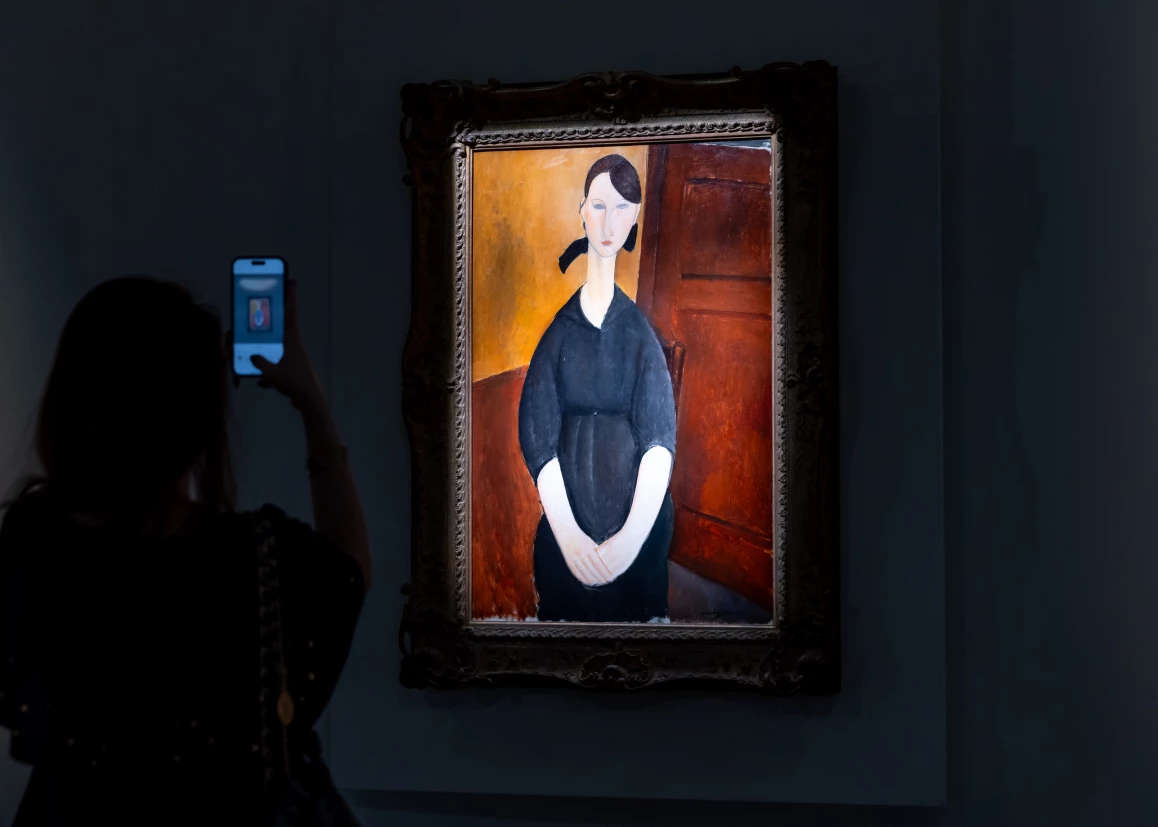
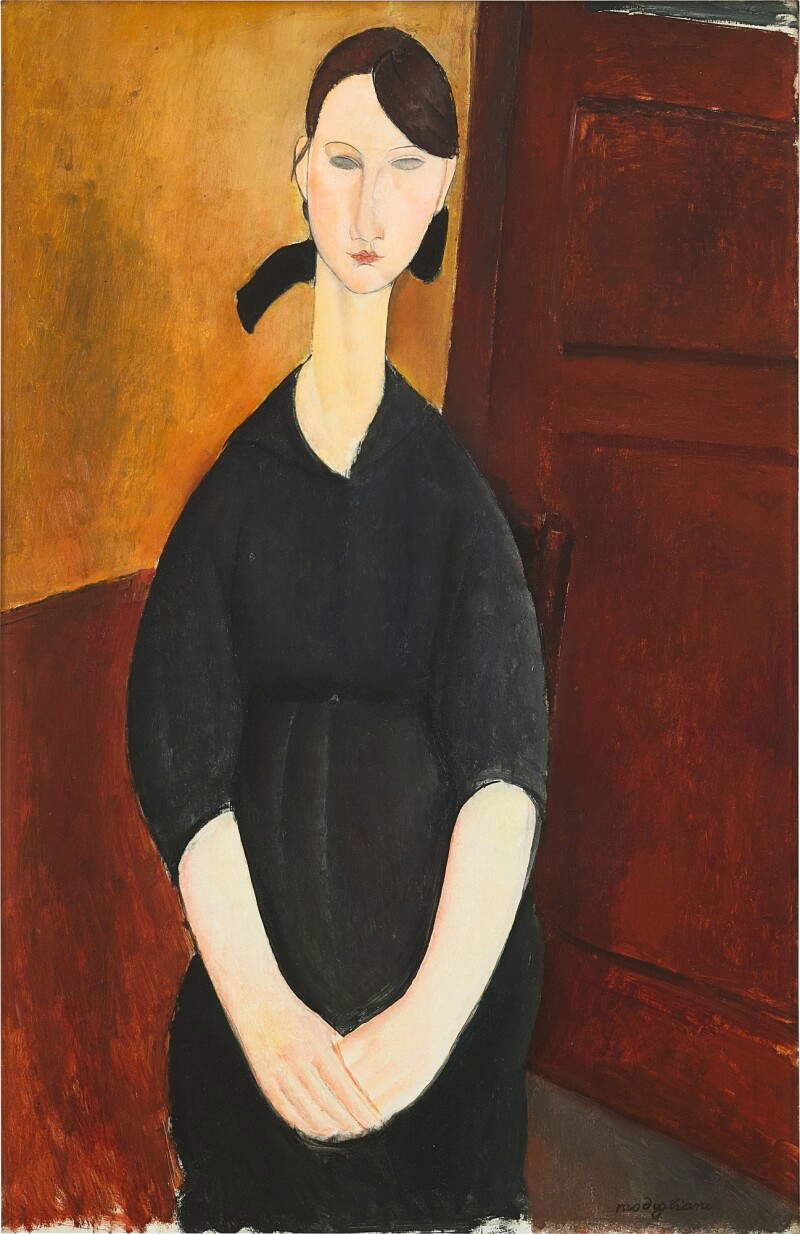

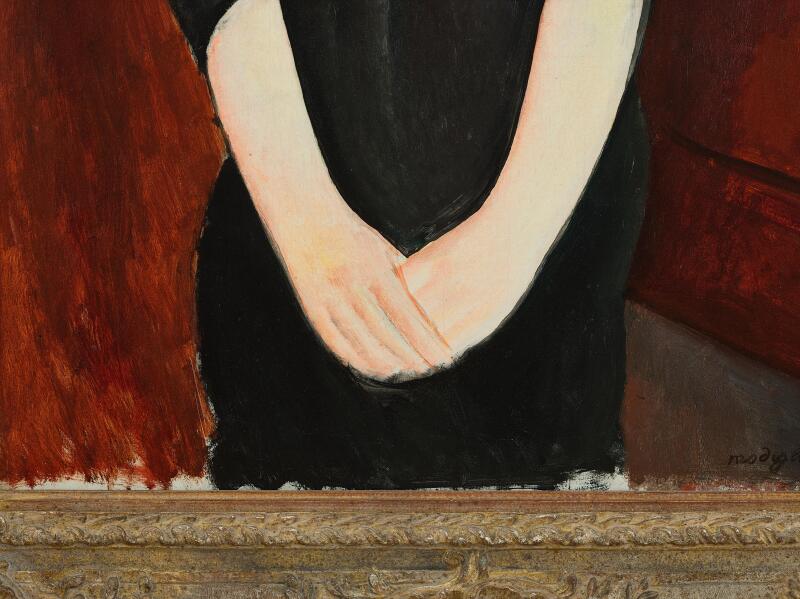
In the years following Modigliani’s death, Paulette began to pose for other artists in his circle, including Chaïm Soutine and Moïse Kisling. Both her collaboration with Zborowski and her relationships with the artists who frequented Modigliani continued in the following years. Thus Paulette continued to help manage Zborowski’s business and his gallery until the gallerist’s death in 1932, after which she went her own way as a gallery owner.
Modigliani, at the time he painted Paulette’s portrait, loved to paint young subjects: these paintings, executed roughly between 1916 and 1919, are among his most poignant paintings. The young people he portrayed often came from humble backgrounds, and much of Modigliani’s enduring appeal lies in the fact that he ennobled ordinary people by painting them in large, sumptuous works. It is therefore not surprising that many of these paintings are in museum collections. In Paulette’s portrait, the young woman is depicted with a quiet poise and elegance that belies her age and draws the viewer’s attention. By addressing Paulette directly, Modigliani imparts a great sense of dignity and self-confidence to his model, rendering her demeanor with a palpable elegance, like that which he often devoted to his companion and muse Jeanne Hébuterne.
Characteristic of Modigliani’s greatest works of the period are the rich palette, warm light and dynamic surface: elements also found in the Portrait of Paulette Jourdain, which qualify it as a masterpiece of the Leghorn artist. This deep palette exudes the fascination and beauty of classical painting undergone by Modigliani, who, the story goes, once remarked to Paulette that the Mona Lisa was her favorite painting in the Louvre, a museum she often visited. And as with the Renaissance masterpiece, Paulette Jourdain assumes a three-quarter format with the subject’s hands delicately clasped in her lap and an enigmatic, impenetrable expression on her face. A composition, however, also present in many of Modigliani’s tall portraits.
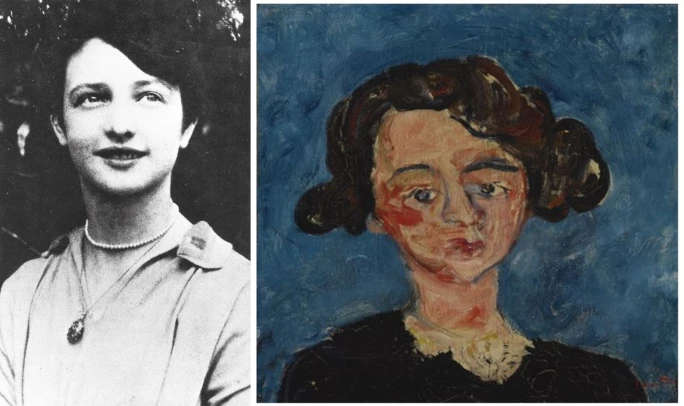
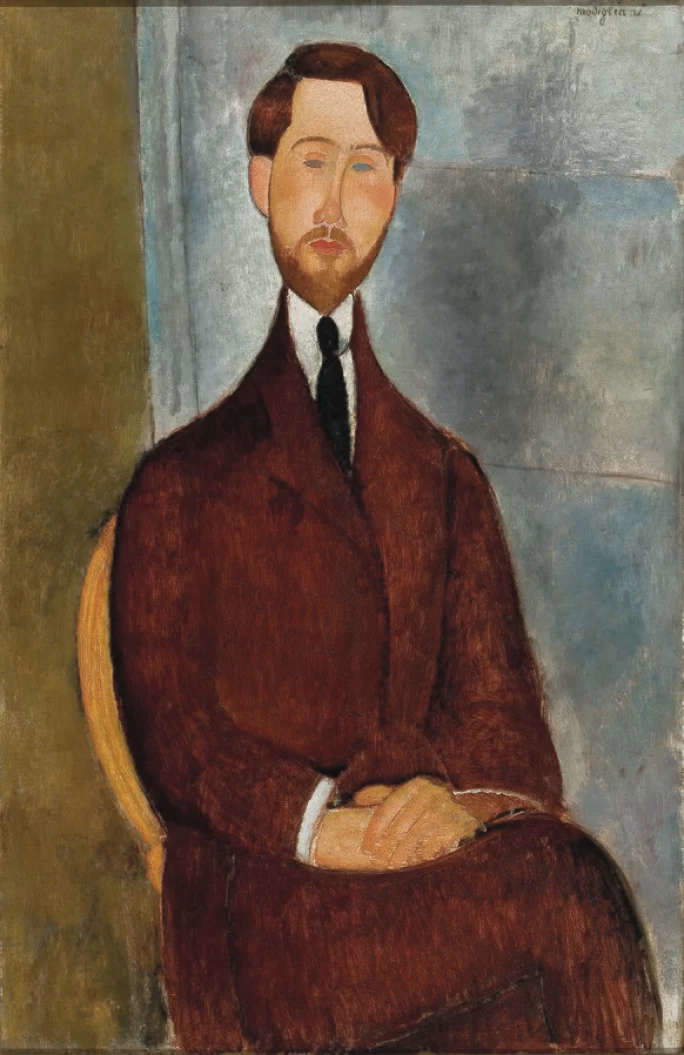
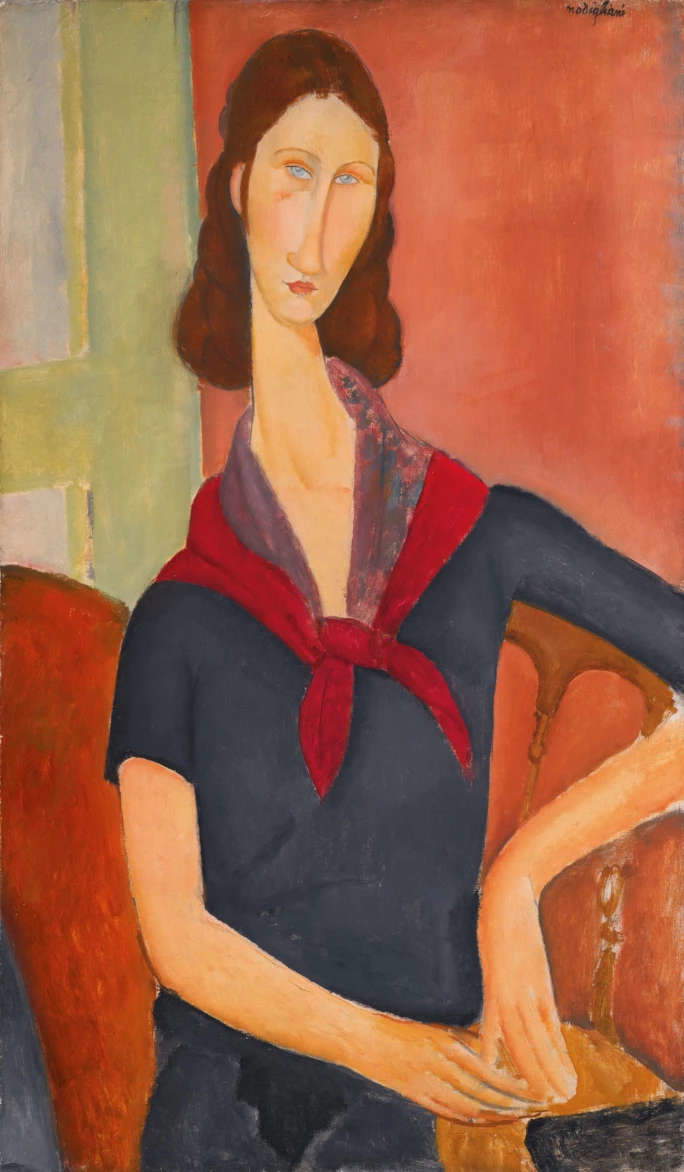
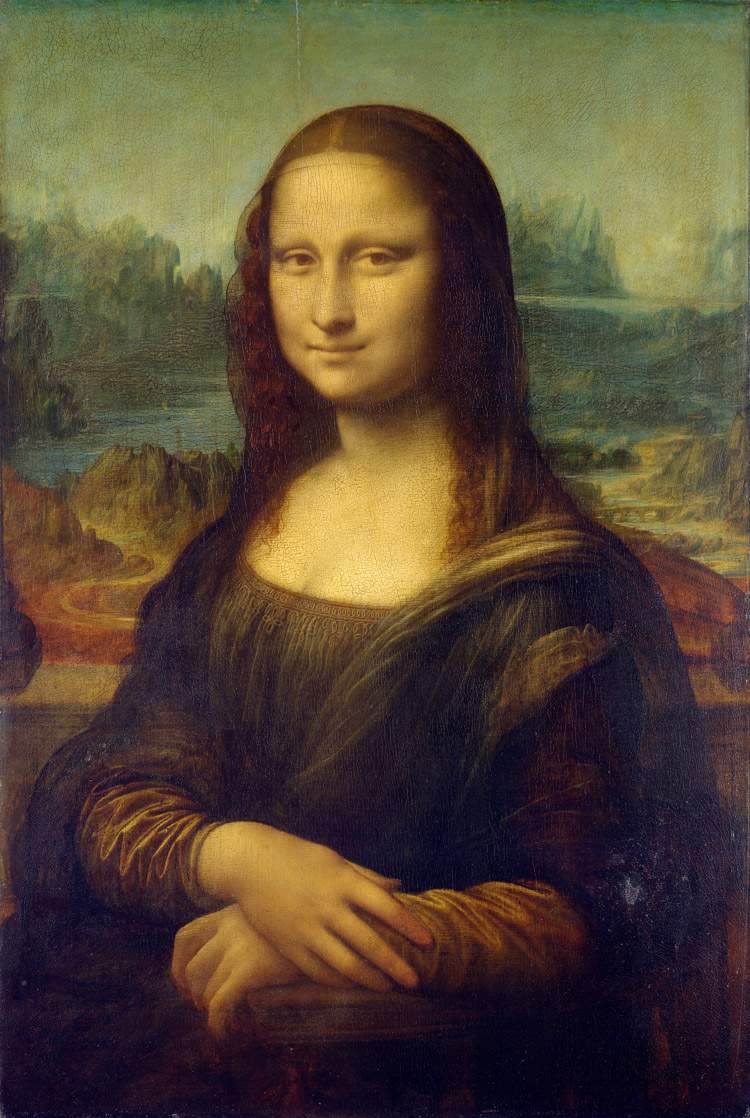

Made shortly before the 1920s, the work manifests many inspirations pioneered by artists of the School of Paris at that time, including primitive art and Cubism. The influence of African masks is particularly evident in this work, especially if one observes the ovoid shape of Paulette’s head, her hollow eyes and tapered nose, as well as the elongated shape and frontal pose that give her the hieratic presence of a totem, along the lines of ceremonial and reliquary statuary.
Many of Modigliani’s contemporaries, such as Pablo Picasso and Henri Matisse, were also obsessed with the beauty and simplicity of primitive artifacts. Under the artist’s brush, these influences merge and transform into something larger, unique, and unmistakably identifiable as typical of Modigliani.
Such a rare masterpiece has an equally illustrious provenance and exhibition history: the Portrait of Paulette Jourdain has belonged to some of the most influential figures in 20th and 21st century art history, including dealers such as Paul Guillaume and Justin K. Thannhauser, as well as renowned collector A. Alfred Taubman and, more recently, collectors Liu Yiqian and Wang Wei, founders of the Long Museum in Shanghai. The painting has been included in some of the most important exhibitions on the artist’s work, including the 1951 retrospectives at the Cleveland Museum of Art and MoMA in New York, the exhibition at the Jewish Museum in New York, Modigliani, Beyond the Myth, and the 2006 Modigliani and His Models exhibition at the Royal Academy in London, among others.
 |
| Modigliani masterpiece sold in Hong Kong: it is the most expensive Western work passed in Asia |
Warning: the translation into English of the original Italian article was created using automatic tools. We undertake to review all articles, but we do not guarantee the total absence of inaccuracies in the translation due to the program. You can find the original by clicking on the ITA button. If you find any mistake,please contact us.